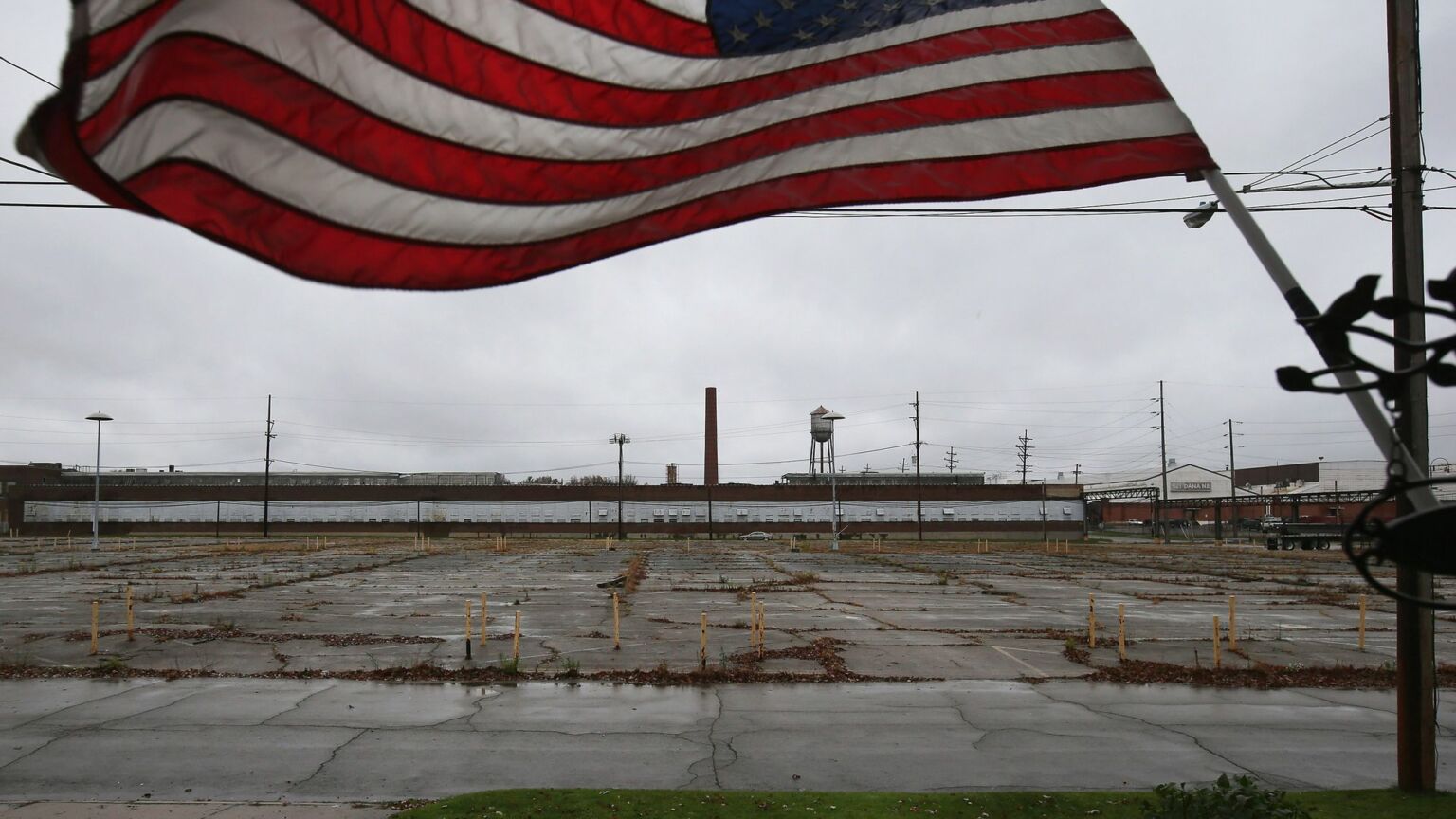How working-class despair fuelled the opioid crisis
The Right to Pain Relief digs at the social roots of America’s addiction to painkillers.

Want to read spiked ad-free? Become a spiked supporter.
Back in 1990, when I first became involved in pain research, there was considerable optimism that new technologies would improve our understanding of pain mechanisms. Scanning technologies, such as MRI (magnetic resonance imaging) and PET (positron emission tomography), delivered spectacular images of the body and brain. It surely wouldn’t be long before new medications could use this new knowledge to deliver better pain relief, many of us thought.
However, as Mark Sullivan and Jane Ballantyne outline in their new book, The Right to Pain Relief, that optimism was tragically misplaced. ‘The unfortunate truth is that we have not found better treatments that lower the population burden of chronic pain’, they write. ‘In fact, instead of solving the chronic pain problem, it has got worse.’
Not only has the problem of chronic pain got worse, there has also been another unforeseen consequence of the pursuit of pain relief. The widespread use of opioids to tackle chronic pain in the US has generated an epidemic of legal drug addiction. The opioid crisis has now claimed half a million American lives and costs roughly one trillion dollars a year.
Many accounts of the opioid crisis, including popular Netflix docudrama Painkiller, place the blame firmly on the Sackler brothers – the owners of Purdue Pharma. Purdue put the highly addictive opioid, OxyContin, on the market in 1996. It vigorously promoted it as a safe and humane treatment for chronic pain. But while the Sacklers deserve a special place in hell for profiting from the devastation that OxyContin has produced, it would be a mistake to blame them entirely.
Indeed, Purdue Pharma’s road to hell was paved with the good intentions of many experts, researchers and doctors. To properly understand the opioid crisis, Sullivan and Ballantyne caution that we must look beyond the ‘greedy pharma entrepreneurs who assured us that opioids were safe’ and ‘look deeper into its roots’.
One root of the crisis is the way we have come to view pain. It appears to us as an automatic consequence of the protective mechanisms of the body, which are activated by injury or disease. Other forms of human suffering, such as loneliness or depression, might be the consequence of our behaviour and thoughts, but pain is always viewed as entirely beyond our control. This is partly why patients afflicted with loneliness often accept that their suffering contains some meaning, while patients with chronic pain find this idea much harder to accept.
A special effort was made in the 1980s to eliminate end-of-life pain entirely. Many who worked in palliative care enthusiastically promoted opioid therapy to give patients a comfortable death. Not unreasonably, the logic of refusing to allow patients to die in overwhelming pain was then leveraged to argue that patients should no longer have to live in pain, either.
Consequently, in the 1990s, the American Pain Society (APS) – which brought together clinicians and researchers interested in pain management – began to argue for a ‘right to pain relief’. Doctors, in its view, should be encouraged to treat pain as the ‘fifth vital sign’ and routinely record pain on a scale of zero to 10 – just as clinicians measure blood pressure and pulse rate. This effort made it clear to patients that the key goal of medicine was to reduce their pain to zero. And once that expectation was set, there was constant pressure to meet it.
The APS, for its part, doubled down on this mission. In 1996, it issued an influential statement asserting that opioids were a safe and effective treatment for chronic pain. Most significantly, it argued that opioids carried a low risk of addiction.
The APS’s guiding assumption was that addiction has less to do with the inherent properties of a substance and more to do with the user. Addiction tends to arise mainly when a substance is used as a means of escape, it was argued. And there is good evidence to back this up. Many soldiers returning from Vietnam quit their substantial heroin habits once they returned to civilian life. Women with a heroin addiction often quit once they become pregnant. And many people quit cigarettes and alcohol to observe religious events, such as Lent.
Would-be opioid users, the APS believed, were not looking for an escape. In fact, they were seeking pain relief so that they could resume their lives as normal. According to this logic, they were therefore unlikely to become addicted.
The APS also leaned heavily on a study of 38 chronic-pain patients who were maintained on opioid therapy for several years. Only two patients in this study developed an addiction, and both had a history of prior drug abuse. Overall, it was assumed that patients could easily stop.
By the end of the 1990s, any reluctance among the medical establishment to prescribe opioids for long-term pain relief was evaporating. The medication had been deemed safe and effective. Drug companies were enthusiastically promoting innovative, long-use opioid products. And doctors felt ethically compelled to provide the pain relief that their patients demanded as a right. This marked the start of the unfolding opioid crisis.
The APS no doubt had the best of intentions in the 1990s, both when it asserted the right to pain relief and then when it ruled that the risk of opioid addiction was low. But it overlooked several big problems.
First, the very notion of an entire life free of pain is an impossible nirvana. In fact, the occasional experience of pain can provide us with the vantage point to grasp happiness. Being ill allows us to see the value of being well. ‘Human life is framed by death and pain’, explain Sullivan and Ballantyne. Losing those frames would destroy what it means to be human.
A further problem was the simplistic view of opioids as mere painkillers. The occasional use of opioids certainly makes acute pain manageable. But this is not because these drugs eliminate the chronic pain itself. Instead, opioids like OxyContin allow patients to stop caring about their pain. That indifference quickly becomes directed towards everything else in the patient’s life. Opioids deliver an all-encompassing state of peace. Sullivan and Ballantyne describe this poetically: ‘Even as actual life falls apart, heroin’s hug from God tells us we are absolutely safe.’
Many people like that feeling, but most also sense that it’s dangerous. This is why only around 25 per cent of people who receive an initial opioid prescription return for a repeat prescription. Those who do return tend to have a reason to want to escape the pain of their lives. Repeat users often have mental-health disorders or face significant social deprivation.
Which brings us to what is perhaps the most significant root of the problem: the APS ignored the cultural and social factors that were laying the groundwork for masses of people to develop opioid addictions. The sweeping away of heavy industry from many American towns in the 1970s and 1980s condemned vast numbers of people to economic and social destitution. For these working-class Americans, working in industry provided not only an income – but also meaning, social solidarity and a sense of status. Losing this work dealt an extraordinary blow to just about every aspect of their lives.
Faced with increasingly bleak futures, many working-class Americans began to experience failing physical health, too. The easy access to opioids then encouraged those in pain and with diminished options to seek the relief of oblivion. As Sullivan and Ballantyne eloquently put it: ‘The increase in pain among less educated Americans can be traced back to the slow disintegration of their social and economic lives, and that the pain is, in turn, one of the links through which disintegration leads to suicide and addiction.’
In The Right to Pain Relief, Sullivan and Ballantyne provide a compelling and coherent account of how the opioid crisis has gripped American society. It shows how deindustrialisation, flawed health policy and good intentions have contributed to a monumental crisis. In doing so, it captures something of the pain felt by many in working-class America today.
Stuart Derbyshire is an associate professor of psychology at the National University of Singapore.
Picture by: Getty.
Who funds spiked? You do
We are funded by you. And in this era of cancel culture and advertiser boycotts, we rely on your donations more than ever. Seventy per cent of our revenue comes from our readers’ donations – the vast majority giving just £5 per month. If you make a regular donation – of £5 a month or £50 a year – you can become a and enjoy:
–Ad-free reading
–Exclusive events
–Access to our comments section
It’s the best way to keep spiked going – and growing. Thank you!







Comments
Want to join the conversation?
Only spiked supporters and patrons, who donate regularly to us, can comment on our articles.